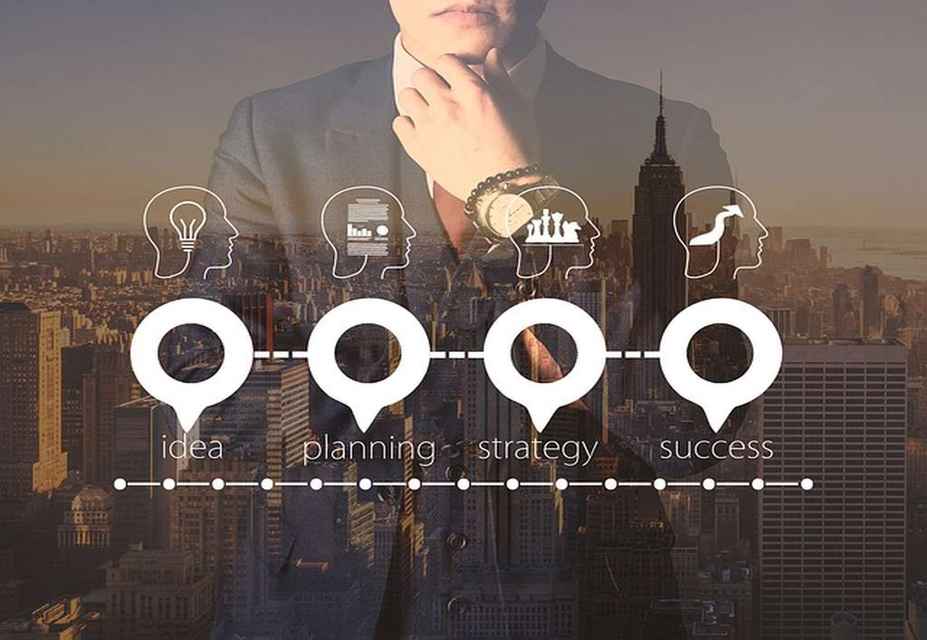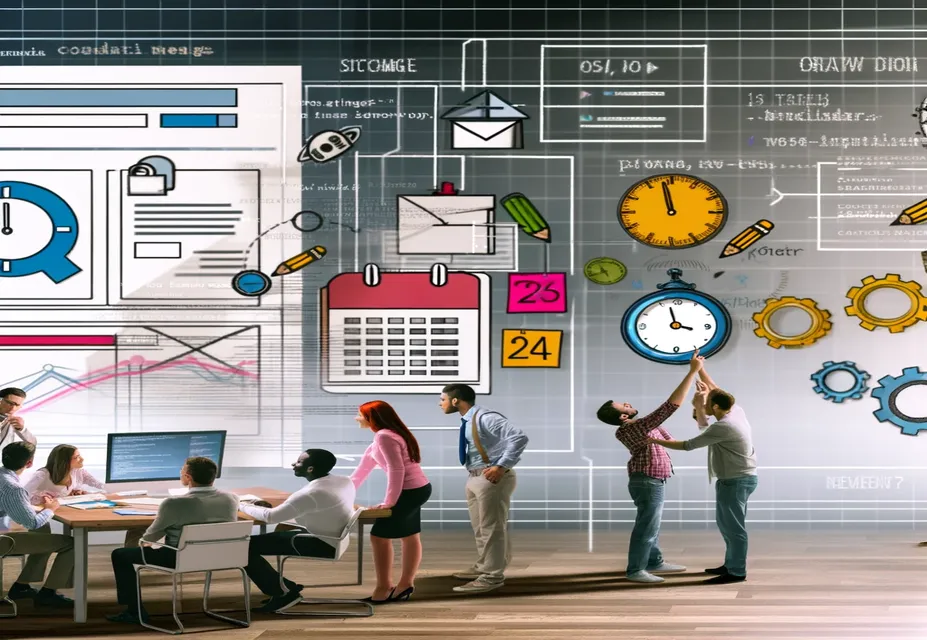Exploring Costs, Factors, and Considerations
In this comprehensive guide, we delve into the intricacies of affordable web design strategies as well as the various factors that influence costs and the considerations that both designers and clients should keep in mind. From understanding the different pricing models to evaluating the scope of work and the value of a website, this article offers valuable insights and practical guidance for anyone looking to navigate the world of web design pricing. Whether you're a business owner seeking to invest in a new website or a designer looking to set fair and competitive rates, this guide has you covered..
Understanding Web Design Pricing Models
Hourly Rate Model
The hourly rate model is a common pricing structure in the web design industry, where designers charge an hourly fee for their services. This model works by tracking the timeframes for web design and billing the client accordingly. For designers, the hourly rate model provides a clear and straightforward way to account for their time and expertise. Clients, on the other hand, have the advantage of knowing exactly what they are paying for in terms of the designer's time. However, one of the challenges with this model is that clients may be concerned about potential cost overruns if the project takes longer than expected. Factors that influence hourly rates include the designer's experience and skill level, the complexity of the project, and the geographic location. When negotiating hourly rates, it's important for both designers and clients to communicate openly about expectations, deliverables, and any potential changes to the scope of work.
Project-Based Pricing Model
The project-based pricing model involves setting a fixed price for the entire web design project, regardless of the time spent on the work. This approach offers clarity and predictability for both designers and clients, as the cost is established upfront. Designers benefit from the ability to focus on delivering the best outcome without being constrained by hourly tracking, while clients have the advantage of knowing the total cost from the outset. However, one of the challenges with this model is the potential for scope creep, where additional work not originally included in the project may lead to extra charges. When using this pricing model, key considerations include defining the scope of work in detail, outlining specific deliverables, and establishing clear terms for any additional work. Determining a fair project-based price involves assessing the complexity of the project, the time and resources required, and the value provided to the client.
"Success is not final, failure is not fatal: It is the courage to continue that counts."
Understanding Web Design Pricing Models
Complexity of the Website
The complexity of a website significantly impacts its pricing. Complex websites with advanced functionalities, intricate designs, and extensive content management systems require more time and expertise to develop, leading to higher costs. On the other hand, simple websites with basic features and minimal customization are generally more cost-effective. Finding the right design partner can alleviate the complexity of a project. Clients should consider factors such as the number of pages, the level of interactivity, the need for custom coding, and the integration of third-party services. Strategies for managing costs with complex projects include prioritizing essential features, streamlining the design and development process, and setting realistic timelines to avoid unnecessary expenses.
Customization and Special Features
Customization and special features play a significant role in determining web design costs. Tailoring a website to specific branding requirements, integrating advanced functionalities such as e-commerce platforms or customer portals, and incorporating interactive elements all contribute to higher pricing. Balancing functionality with budget constraints involves identifying the must-have features that align with the client's goals and target audience, while also considering the potential for future scalability and expansion. Prioritizing features to fit the budget requires careful consideration of the long-term value and impact of each customization or special feature on the overall user experience and business objectives.
Design and Visual Elements
The importance of design and visual elements in web design pricing cannot be overstated. Factors such as the complexity of the design, the need for custom graphics or illustrations, and the level of attention to detail all influence the overall cost of the project. Balancing aesthetics with affordability involves collaborating closely with the designer to communicate design preferences, provide clear feedback, and prioritize visual elements that have the most significant impact on the website's branding and user experience. By aligning the design with the client's brand identity and target audience, it's possible to achieve a visually compelling website within a reasonable budget.
E-commerce Functionality
For websites that require e-commerce functionality, additional cost considerations come into play. The development and integration of e-commerce features, such as product catalogs, secure payment gateways, and inventory management systems, contribute to higher pricing due to the complexity and technical expertise required. Balancing features with the budget involves evaluating the essential e-commerce functionalities that align with the client's sales objectives and customer experience requirements. Optimizing e-commerce functionality within a budget entails leveraging pre-built solutions, prioritizing core features, and planning for future expansion while staying within the designated budget constraints.
Evaluating the Scope of Work
Website Content
The role of content in web design pricing extends beyond the creation of text and multimedia elements. Content strategy, SEO optimization, and content management systems all contribute to the overall value of a professional website. . Strategies for managing content costs involve defining a clear content plan, leveraging existing resources, and collaborating with content creators to ensure efficient and cost-effective content production. By aligning the content strategy with the website's goals and user needs, it's possible to optimize the impact of content within the allocated budget.
Responsive Design and Mobile Optimization
The importance of responsive and mobile-optimized design is reflected in the cost implications of ensuring a seamless user experience across various devices. Designers must consider the additional effort required to develop and test responsive layouts, optimize images and media for mobile viewing, and implement mobile-specific functionalities. Strategies for ensuring mobile-friendliness within budget involve prioritizing key elements of mobile optimization, such as fast loading times and intuitive navigation, while balancing the cost of extensive mobile features with the overall project budget.
SEO and Marketing Integration
The integration of SEO and marketing elements into the web design process influences the overall pricing. Factors such as keyword research, on-page optimization, and the integration of marketing tools and analytics impact the cost of the project. Balancing marketing features with the budget requires careful consideration of the most impactful strategies for reaching the target audience and achieving the website's conversion goals. By prioritizing essential SEO and marketing integrations, clients can maximize the impact of their web design investment without exceeding their budget constraints.
Maintenance and Support
Understanding the importance of ongoing maintenance and support is essential for enhancing your online presence through web design and evaluating the full cost of a website. Factors such as software updates, security monitoring, and technical support contribute to the long-term cost of ownership. Strategies for managing maintenance costs include selecting the right hosting and maintenance plans, establishing clear service level agreements, and negotiating ongoing support fees. By prioritizing essential maintenance and support services, clients can ensure the long-term performance and security of their website while optimizing the associated costs.
Understanding the Value of a Website
Business Goals and ROI
Linking web design costs to business goals and return on investment (ROI) is crucial for understanding the value of a website. Strategies for maximizing the ROI of a website involve aligning the design and functionality with the client's business objectives, tracking key performance indicators, and continuously optimizing the website to drive conversions and revenue. Calculating the potential ROI of web design investment requires evaluating the impact of the website on sales, lead generation, and brand visibility, and adjusting the design and marketing strategies accordingly to maximize the return on investment.
Branding and User Experience
The impact of branding and user experience on website value is significant, as they directly influence customer perception and engagement. Strategies for enhancing branding and user experience within budget involve defining a clear brand identity, creating a seamless and intuitive user interface, and prioritizing user-centric design elements. Calculating the value of branding and user experience investments requires considering the potential impact on customer loyalty, brand recognition, and overall user satisfaction, and aligning the design decisions with the client's long-term branding and marketing goals.
Long-Term Scalability and Flexibility
The importance of long-term scalability and flexibility in web design directly affects the value of a website. Cost implications of scalable and flexible design include the initial investment in a robust and adaptable framework, as well as the potential for future expansions and updates. Strategies for ensuring scalability and flexibility within budget involve planning for future growth, selecting a flexible and extensible platform, and prioritizing features that support long-term sustainability. By aligning the website's design and architecture with the client's future plans and business goals, it's possible to create a valuable and enduring digital asset within the allocated budget.
Competitive Advantage and Industry Standards
Understanding how web design contributes to competitive advantage and meets industry standards is essential for evaluating the value of a website. Cost considerations for meeting industry standards involve compliance with accessibility guidelines, security protocols, and performance benchmarks. Strategies for gaining a competitive advantage within budget include identifying unique selling points, differentiating the website from competitors, and aligning the design and functionality with industry best practices. By prioritizing features that enhance the website's competitiveness and industry relevance, clients can ensure that their web design investment delivers tangible value and sets them apart in the market








